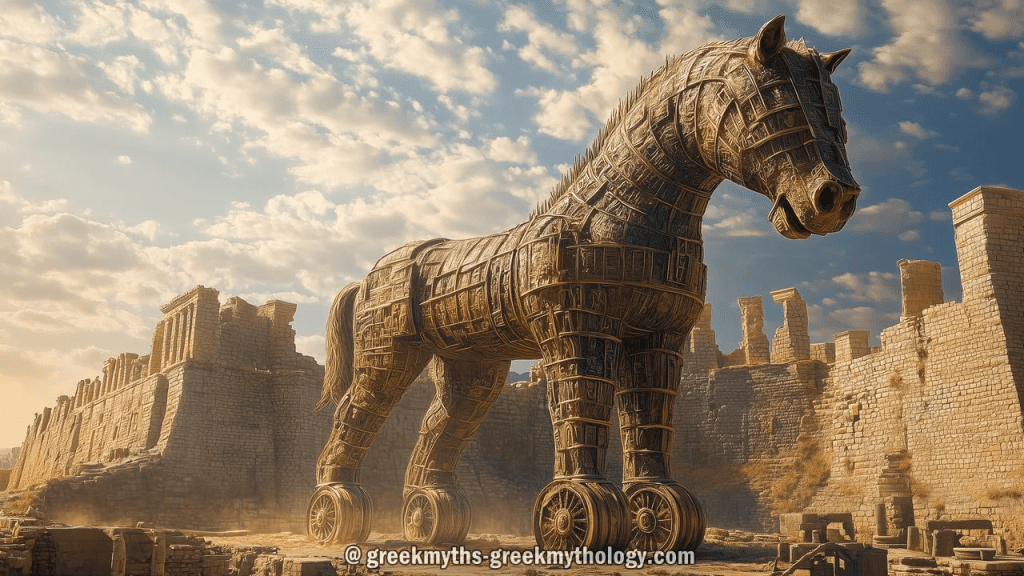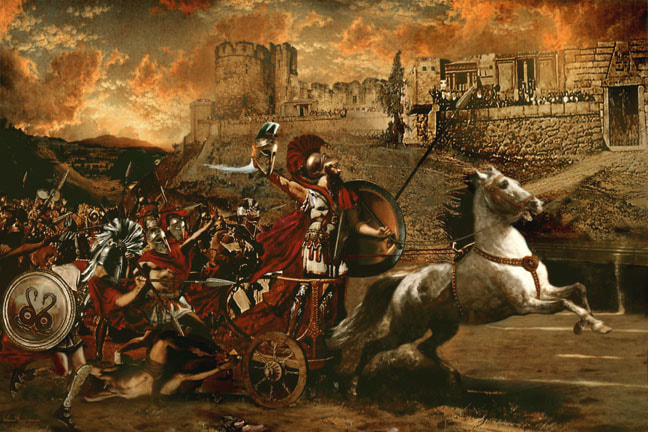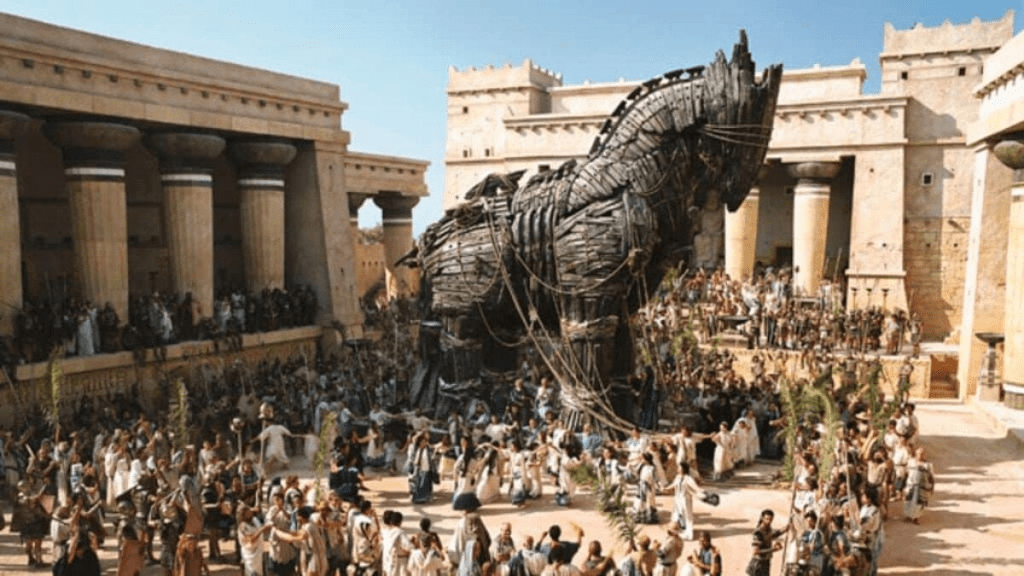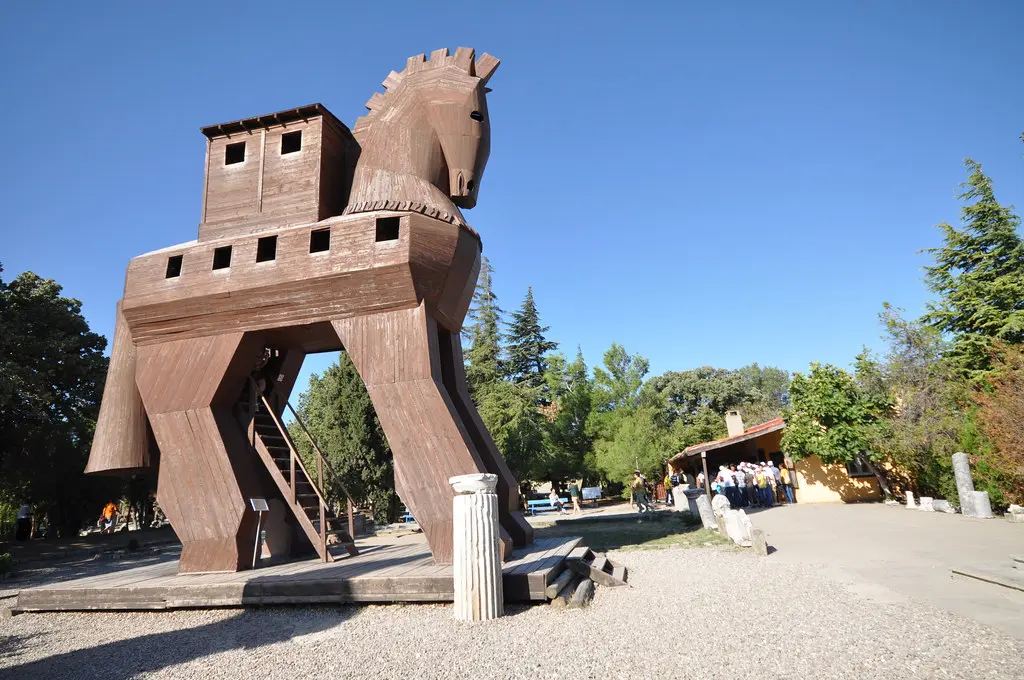In the annals of history and legend, few tales are as enduring or as symbolic as the fall of Troy. Set around 1200 BC, this ancient event has been retold for thousands of years, blending myth, military strategy, and a powerful lesson in trust and betrayal. At the heart of the story is a seemingly harmless object: a wooden horse. But behind this gift lay one of the most brilliant military deceptions of all time.
While modern historians continue to debate the exact details, archaeological discoveries have confirmed that a major city in modern-day Turkey believed to be ancient Troy suffered fiery destruction around the same time this legend is said to have taken place. Whether or not the wooden horse was real, the fall of Troy certainly was.

The Trojan War: A Conflict of Gods, Honor, and Power
The Trojan War is famously rooted in the epic poetry of Homer, particularly The Iliad. While Homer focuses on the battles, gods, and heroes during the final years of the war, later accounts especially The Aeneid by Virgil add the iconic tale of the wooden horse.

According to these accounts, the war began when Paris of Troy abducted Helen, the queen of Sparta, whose beauty was said to rival that of the gods. Her husband, Menelaus, joined forces with his brother Agamemnon, king of Mycenae, and other Greek leaders, including Odysseus, Achilles, and Ajax, to launch an expedition to retrieve her and punish Troy.
For ten long years, the Greeks laid siege to Troy. Battles raged, heroes fell, and still the city’s massive walls held firm. It seemed the Greeks could never penetrate the city’s defenses until a plan was born that would change everything.
Video:
Trojan Horse: The Deception That Destroyed Troy | Greek Mythology’s Greatest Trick
The Wooden Horse: A Masterstroke of Strategy
The plan is widely credited to Odysseus, the cleverest of the Greek commanders. He proposed a ruse: build a massive wooden horse, large enough to hold a group of elite warriors inside, and leave it at the gates of Troy as a “gift” signaling their surrender.
The rest of the Greek army would burn their tents and appear to sail away, giving the illusion of a full retreat. Believing the war was finally over, the Trojans pulled the wooden horse into the city as a trophy completely unaware of the danger hidden within.
That night, under the cover of darkness and celebration, the Greek soldiers crept out of the hollow belly of the horse, unlocked the gates, and ushered in the returning Greek army, which had only hidden nearby. What followed was devastation: fires, bloodshed, and the collapse of a once-great city.

Archaeology Meets Legend
For centuries, the story of Troy and the wooden horse was considered myth nothing more than a legend passed down through generations. But in the late 19th and early 20th centuries, archaeologists began excavating the site of Hisarlik in northwestern Turkey.
There, they uncovered ruins of a large, fortified city dating back to approximately 1200 BC the same time traditionally associated with the Trojan War. Burnt layers, collapsed walls, and evidence of violent destruction confirmed that something catastrophic happened.
While no wooden horse remains were found (unsurprisingly, given the age and organic nature of wood), the evidence of fire and war aligns with the legendary account. Whether a physical horse existed or not, the destruction of this ancient city is an undeniable historical event.
Video:
Did ancient Troy really exist? – Einav Zamir Dembin
The Symbolism of the Horse
Today, the Trojan Horse has become a universal metaphor for hidden threats and deceptive appearances. It represents the danger of letting your guard down and the catastrophic cost of misplaced trust.
From cybersecurity (where “Trojan Horse viruses” infiltrate systems while disguised as harmless programs) to literature and political analysis, the legacy of that ancient wooden horse lives on in our vocabulary and understanding of strategy.

Conclusion: Where Myth Meets Reality
The fall of Troy is one of those rare stories where myth and history intertwine so closely that separating them becomes almost unnecessary. Whether or not Greek soldiers actually hid inside a wooden horse, the outcome a powerful city reduced to ashes by a clever strategy was very real.
The remains of ancient Troy, scorched and buried in layers of history, stand as silent witnesses to a tale that shaped civilizations and continues to inspire writers, scholars, and strategists to this day.
Sometimes, the greatest dangers come not from the battlefield but from the gifts we accept without question.


